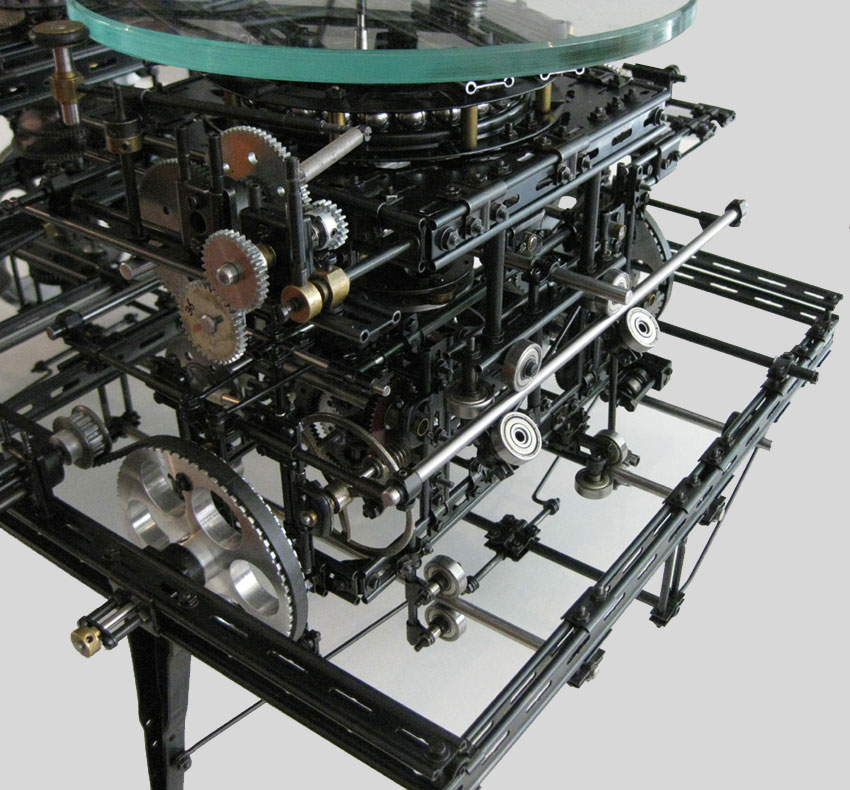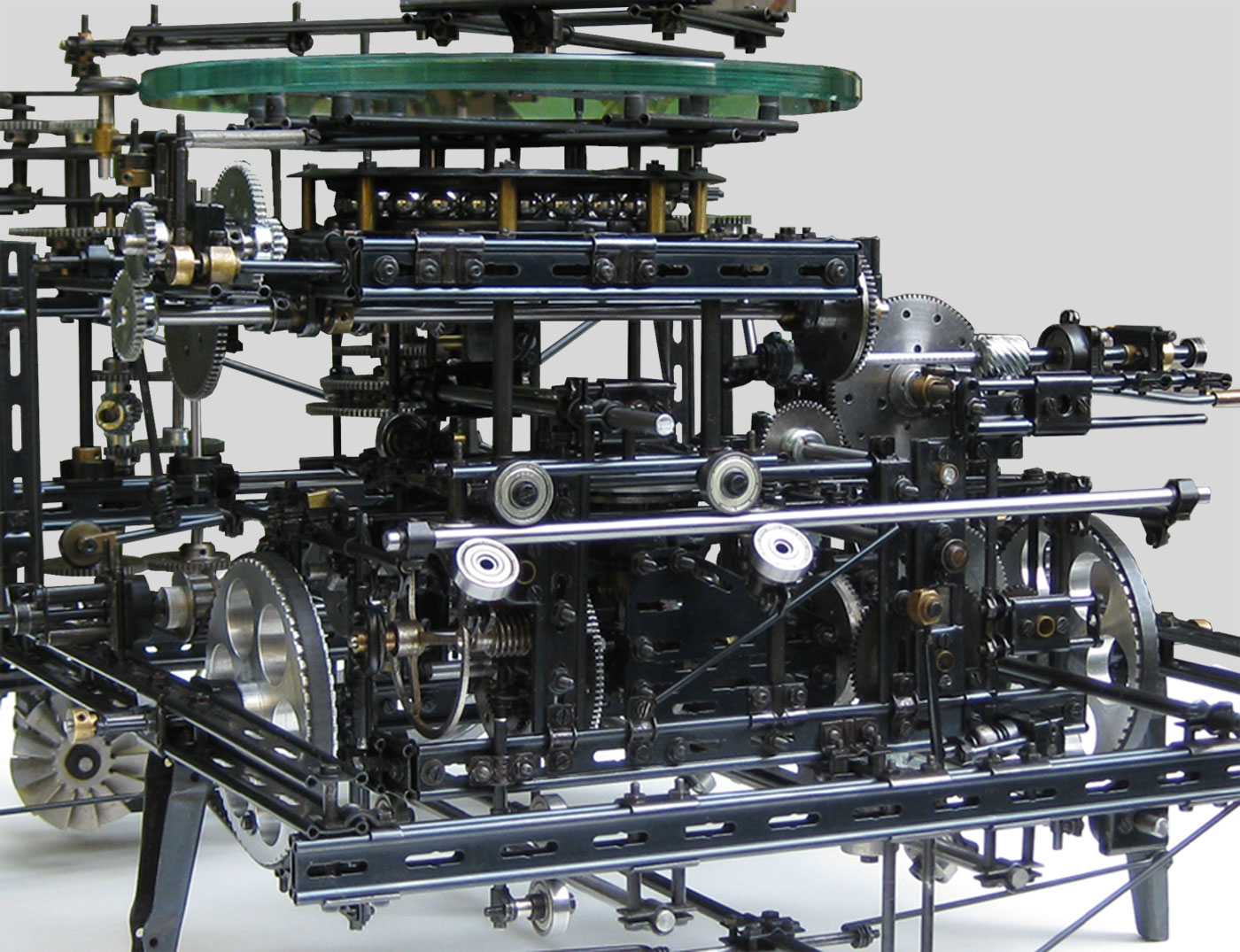Modern versatile harmonograph
This modern, versatile yet complex harmonograph is derived from a Meccano harmonograph after a design by ir. Hans van den Berg. The Meccano model was described in Meccano Nieuws nr. 14.4 (1996), nr. 15.3 (1997) and in Constructor Quarterly nr. 36, june 1997.
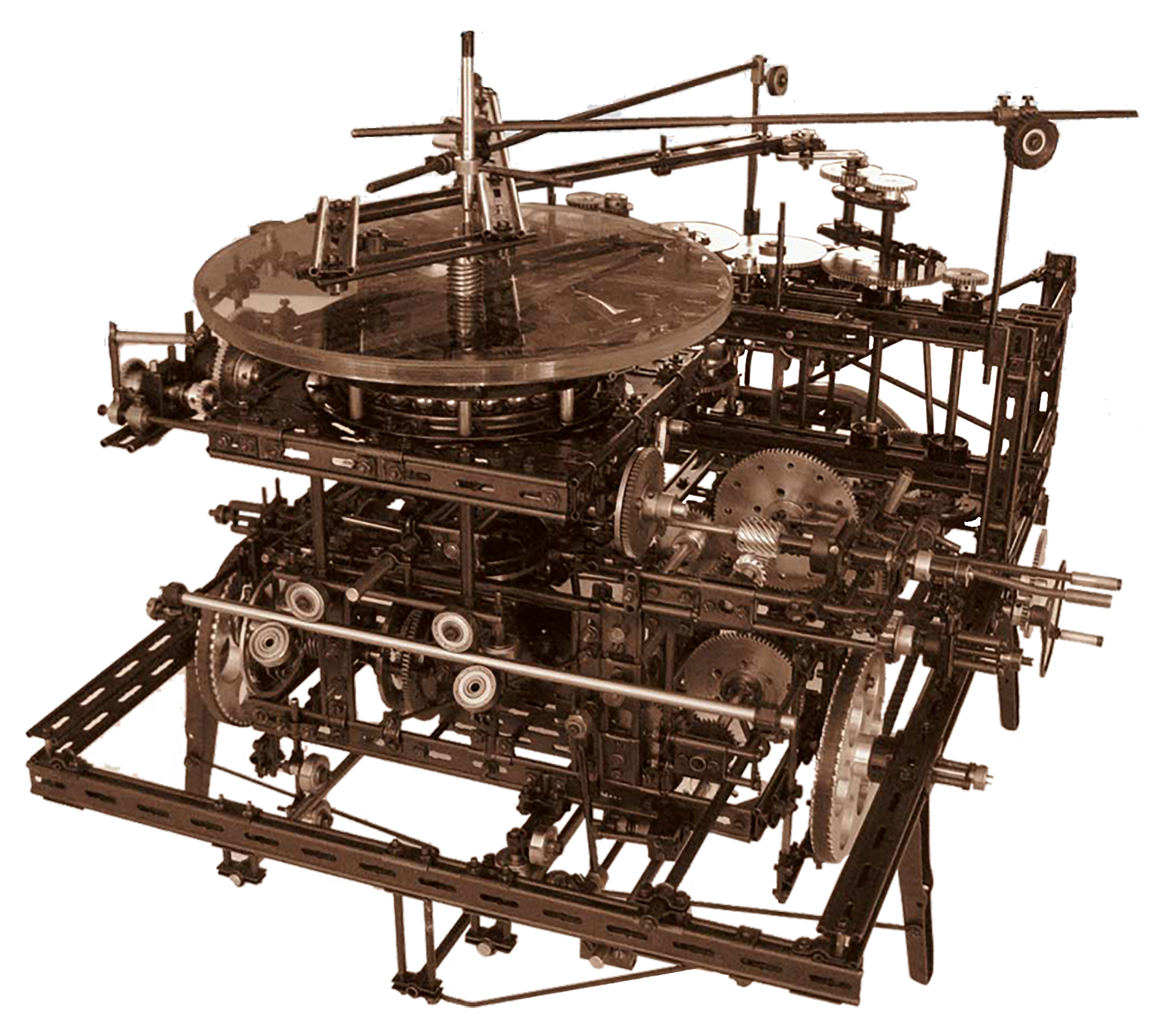
A harmonic motion is a general term applied to a reciprocating motion like that of a piston or a pendulum of a clock. The records obtained by the means of an instrument of this kind are invaluable to the scientific investigator as a means of studying the laws of vibration in relationship with time.
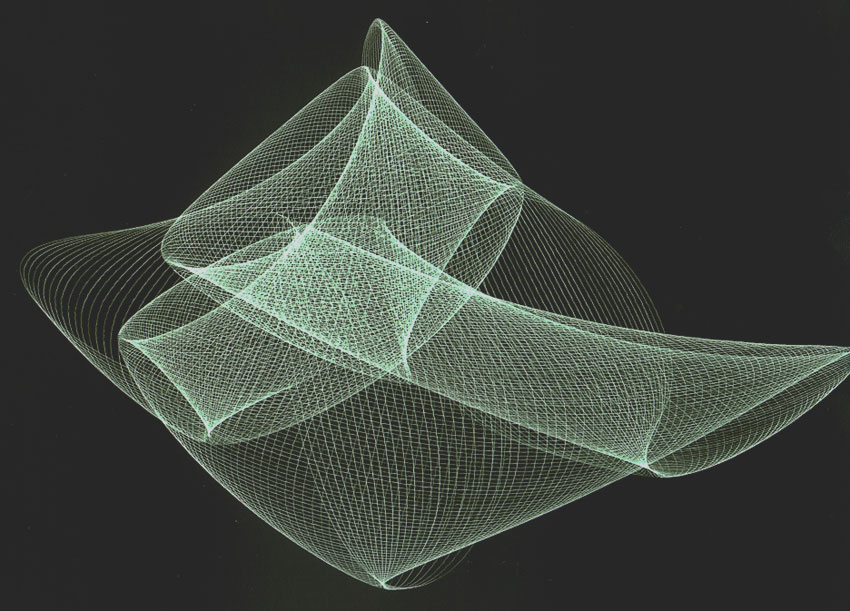 Drawing initially made by the FAC harmonograph, but the colouring and background have been modified by computer.
Drawing initially made by the FAC harmonograph, but the colouring and background have been modified by computer.
In the electronical science we can make an alternating current visible on an oscilloscope and the descriptive lightbulb will show a harmonic movement. Two of these alternating currents with a constant frequency made visible alongside two perpendicular axles (x and y direction) will form typical figures, the socalled Lissajous figures.

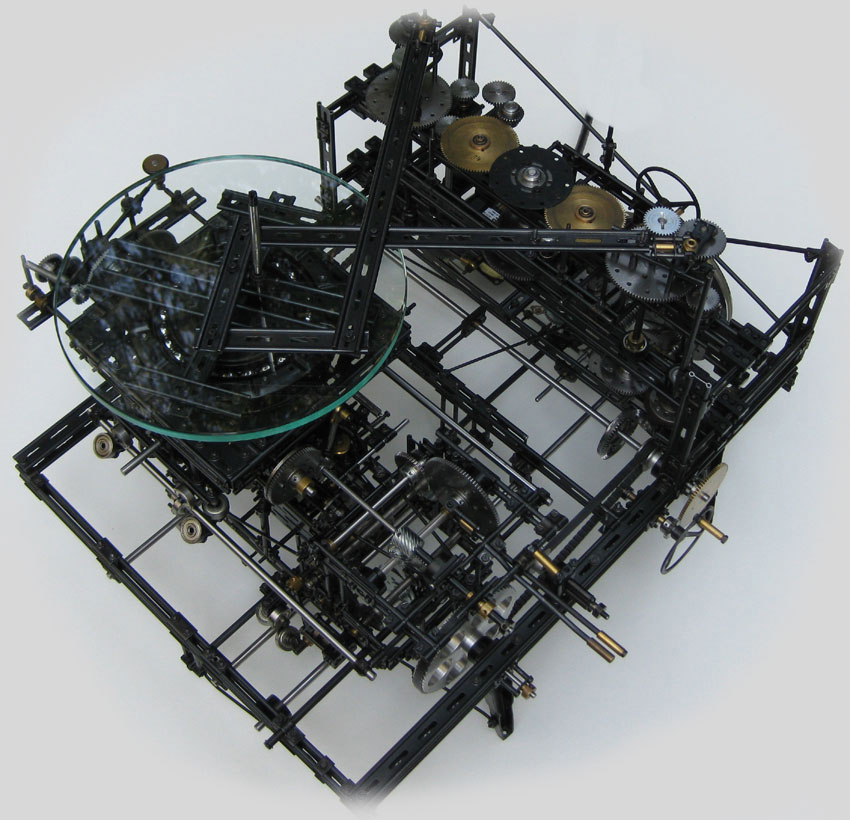
The following pictures show lots of details. The machine is still under development.


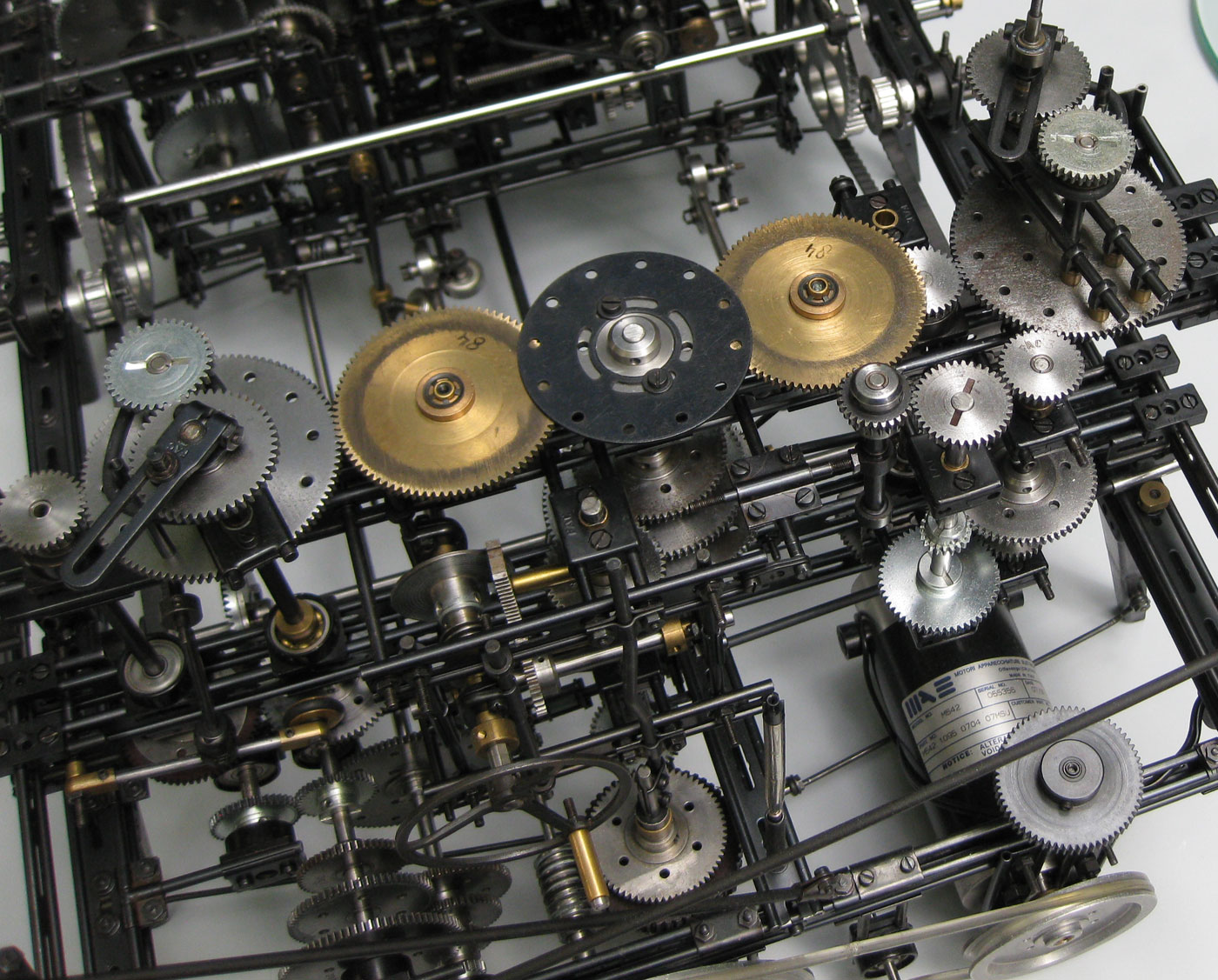
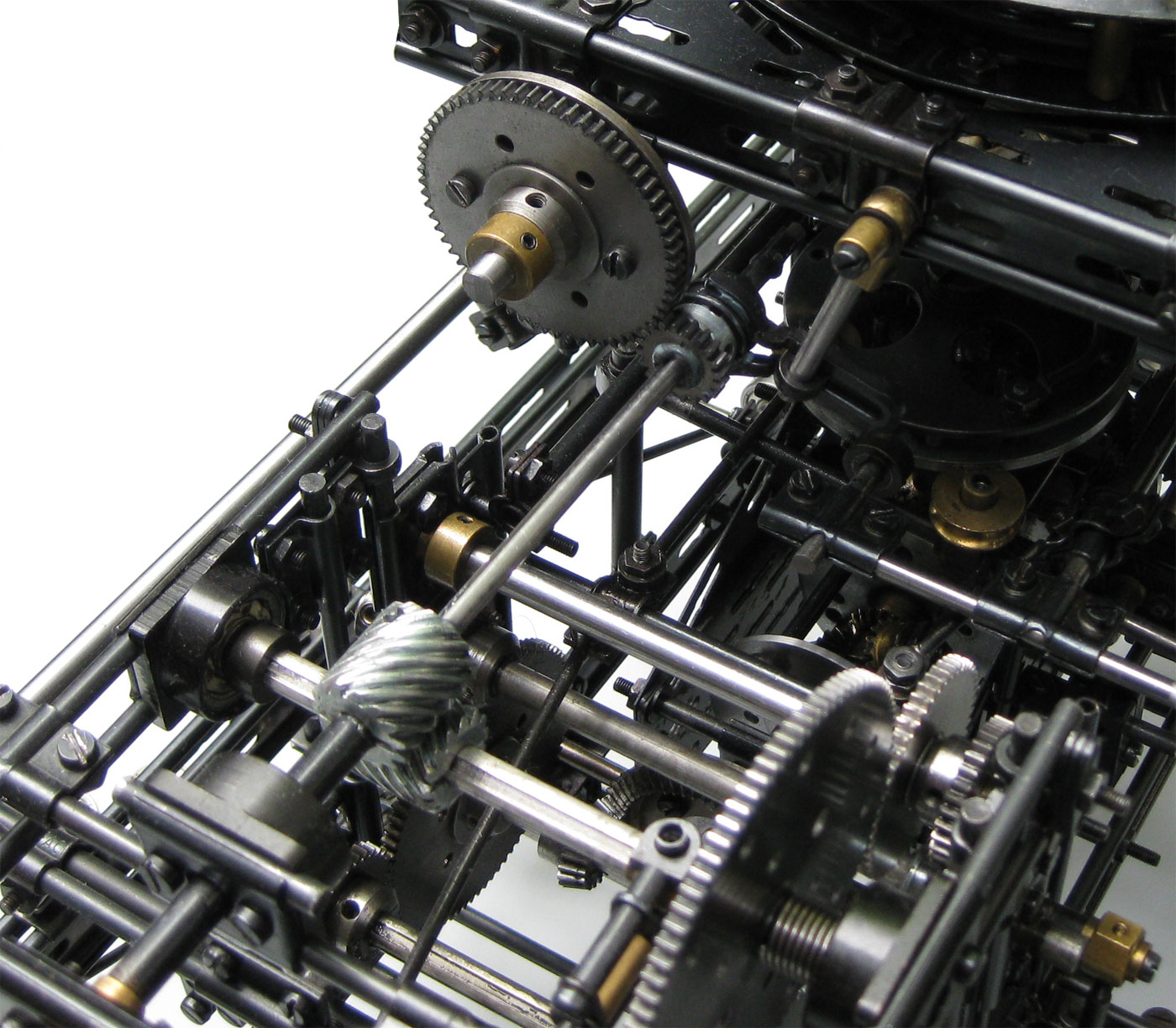
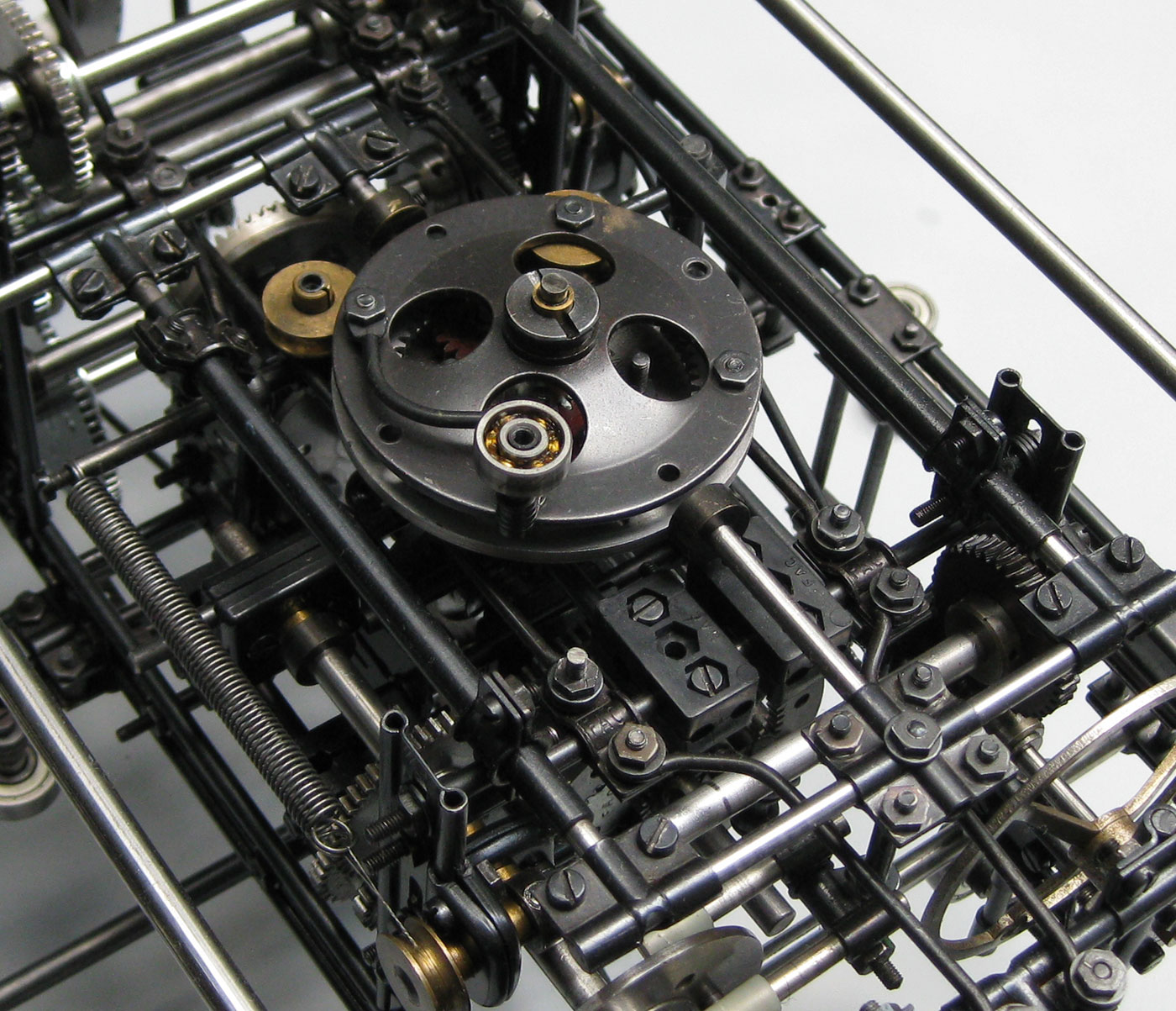

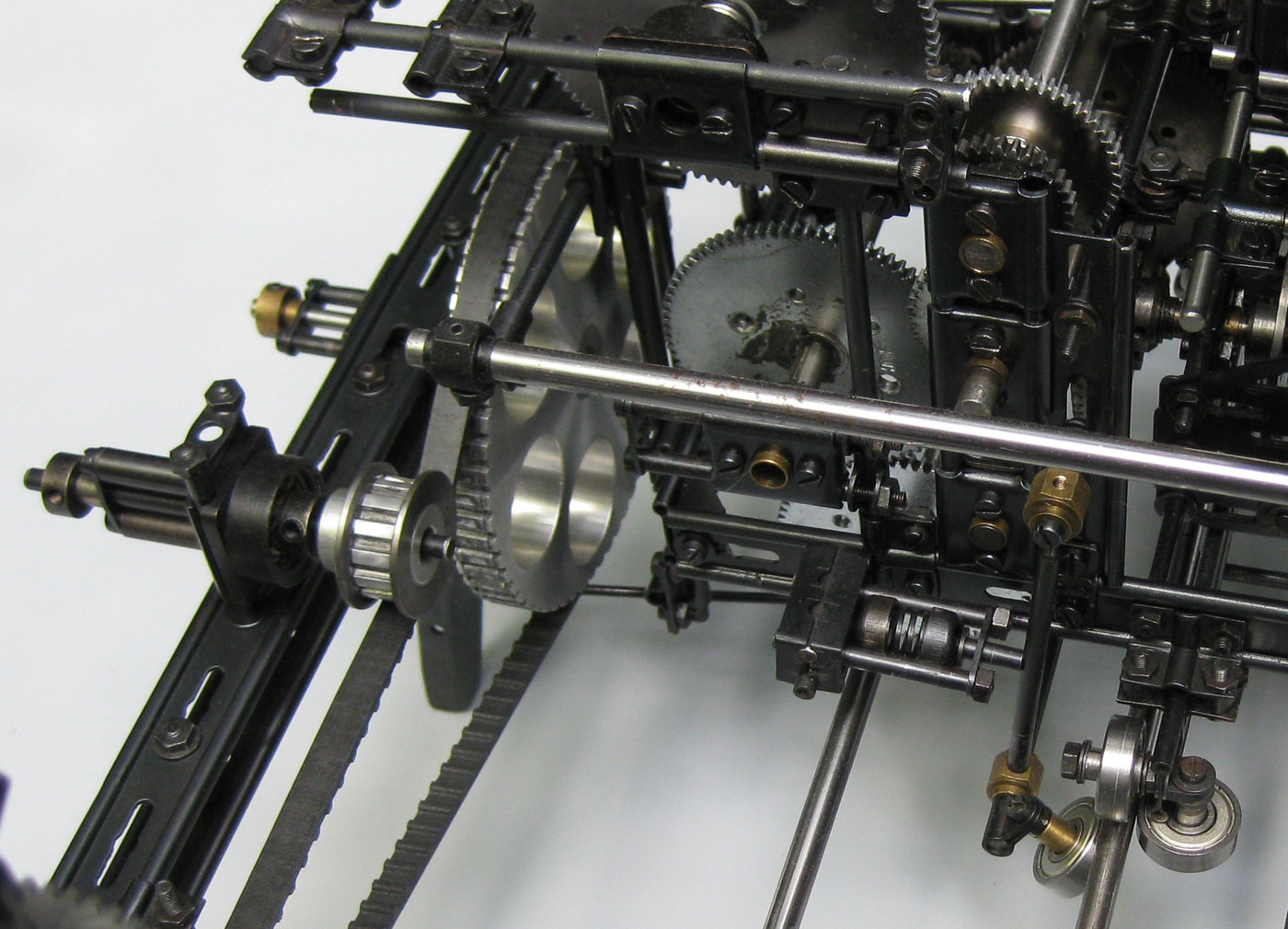
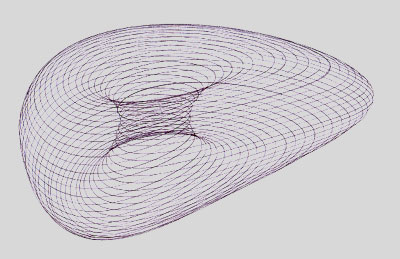
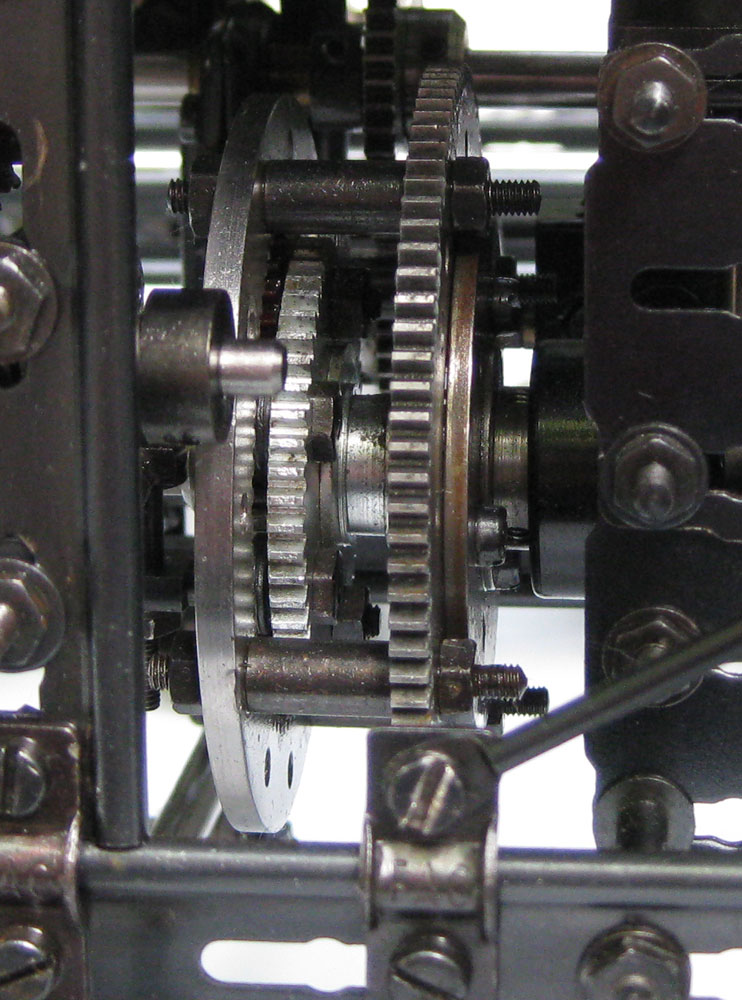
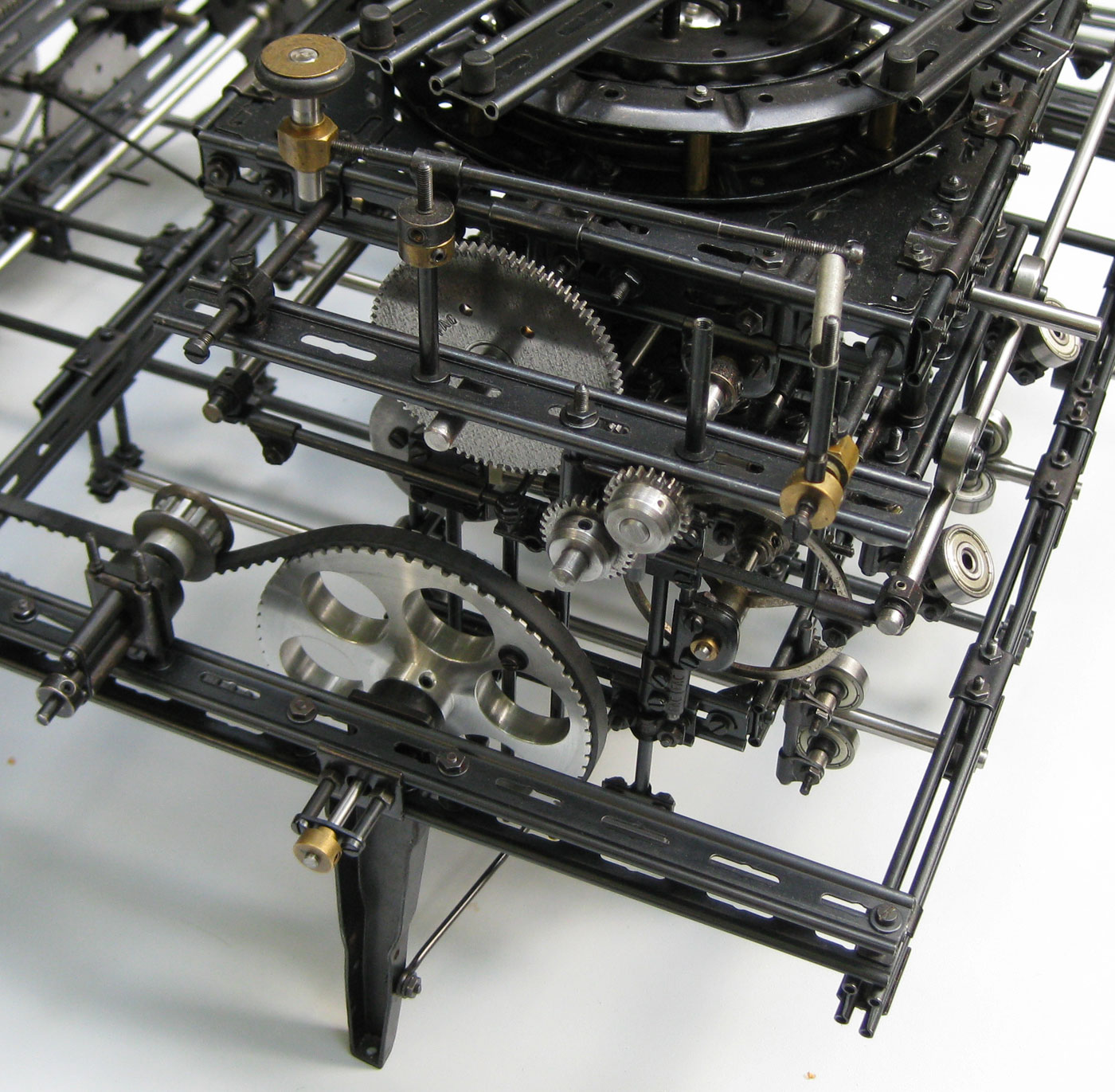
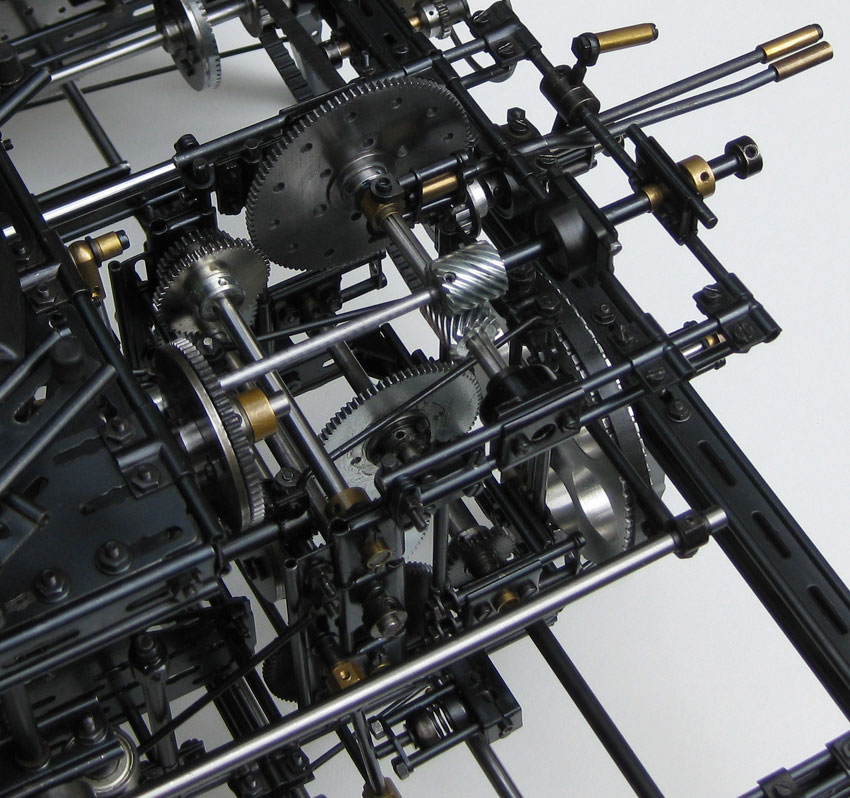
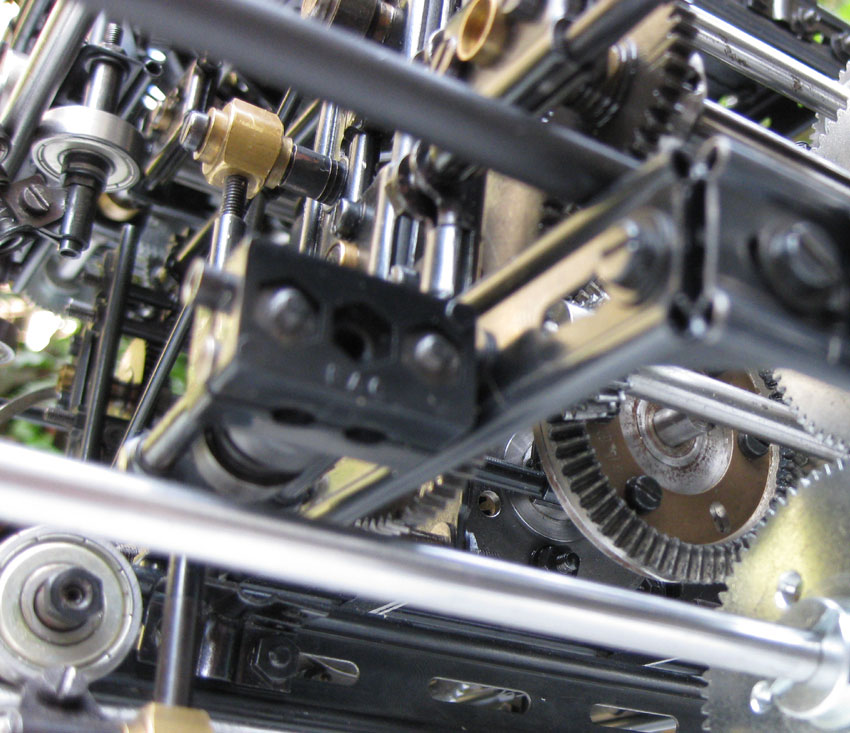

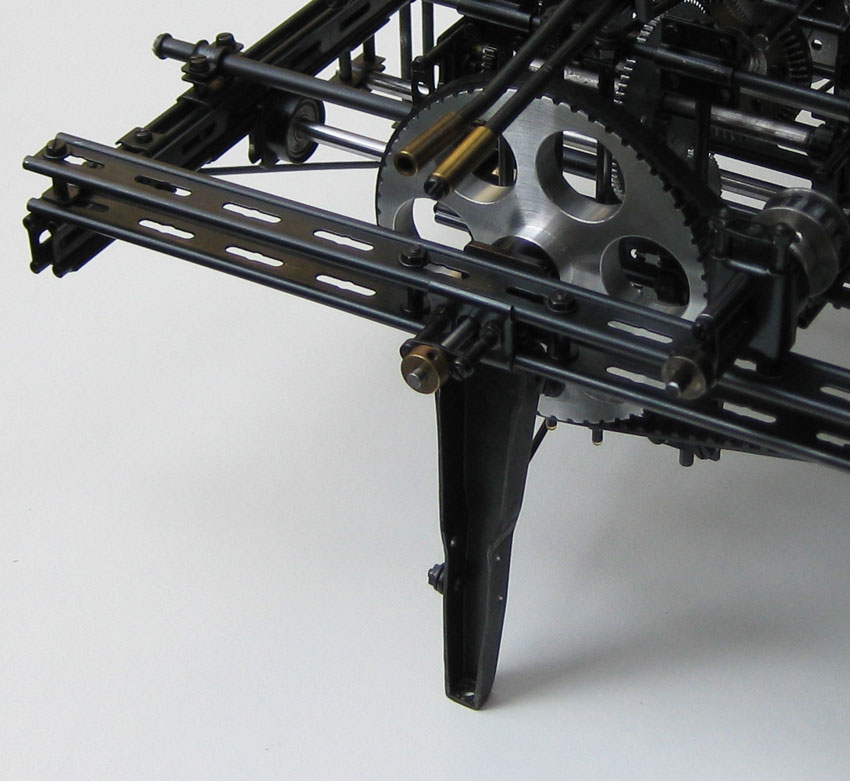

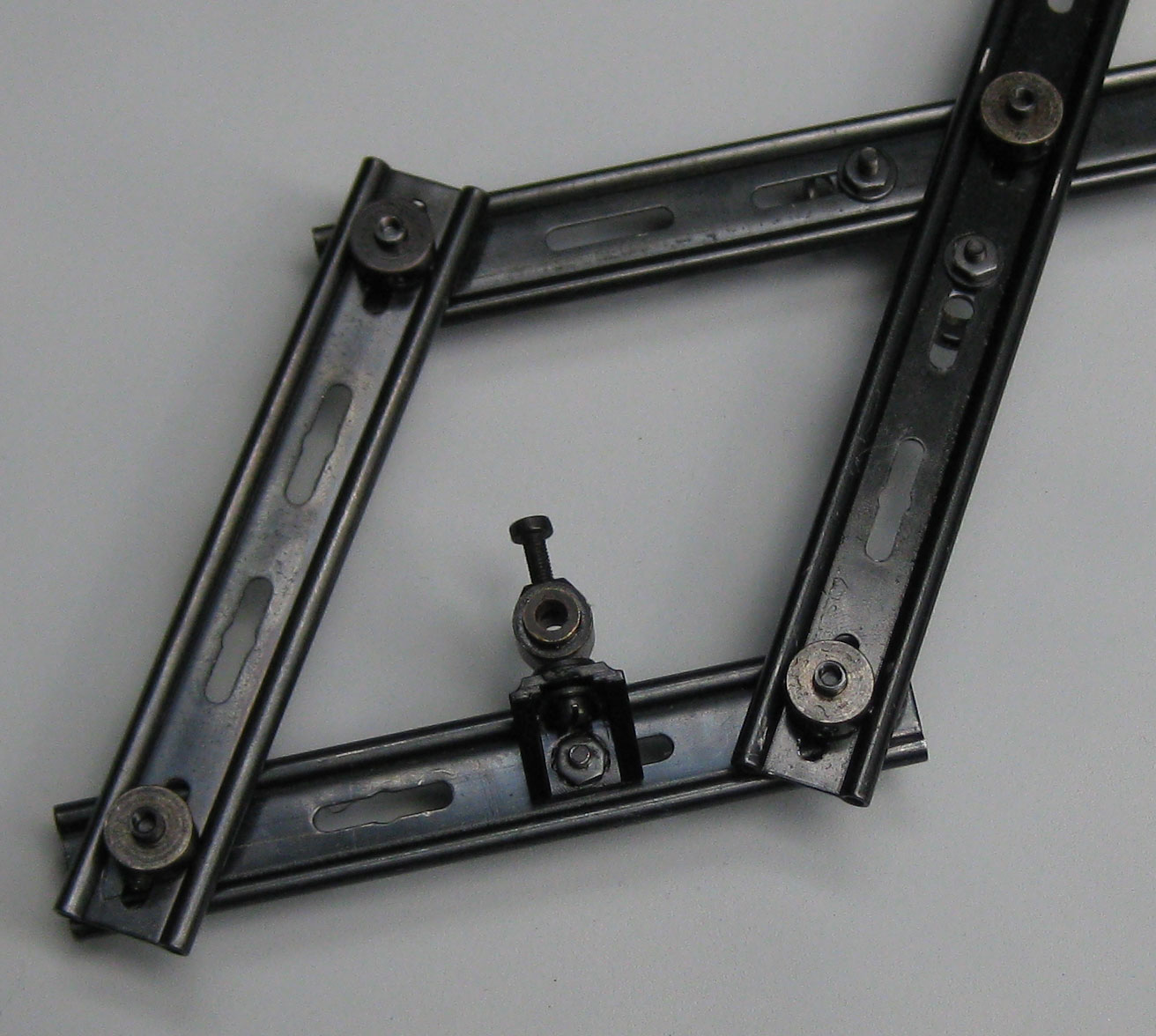

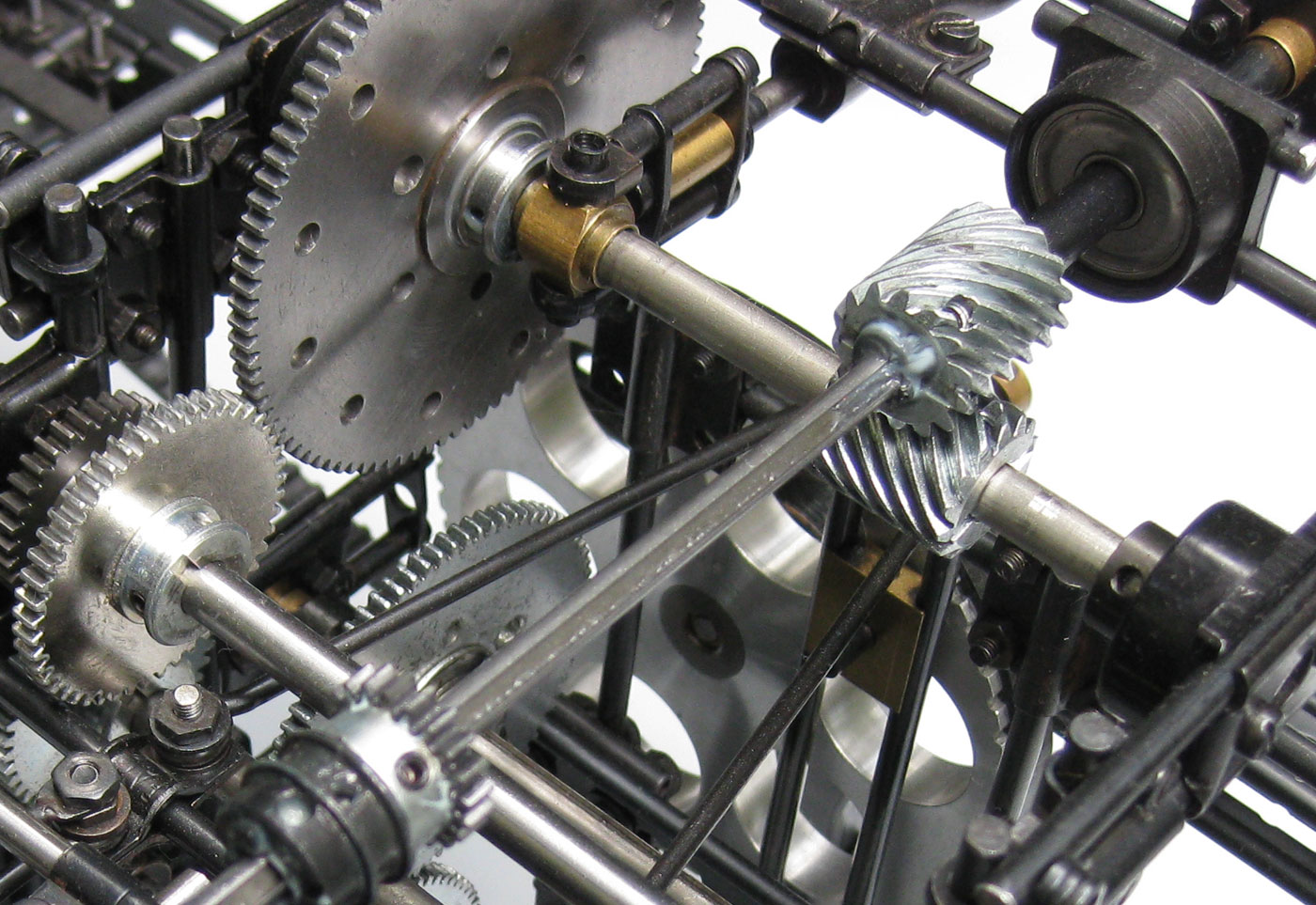

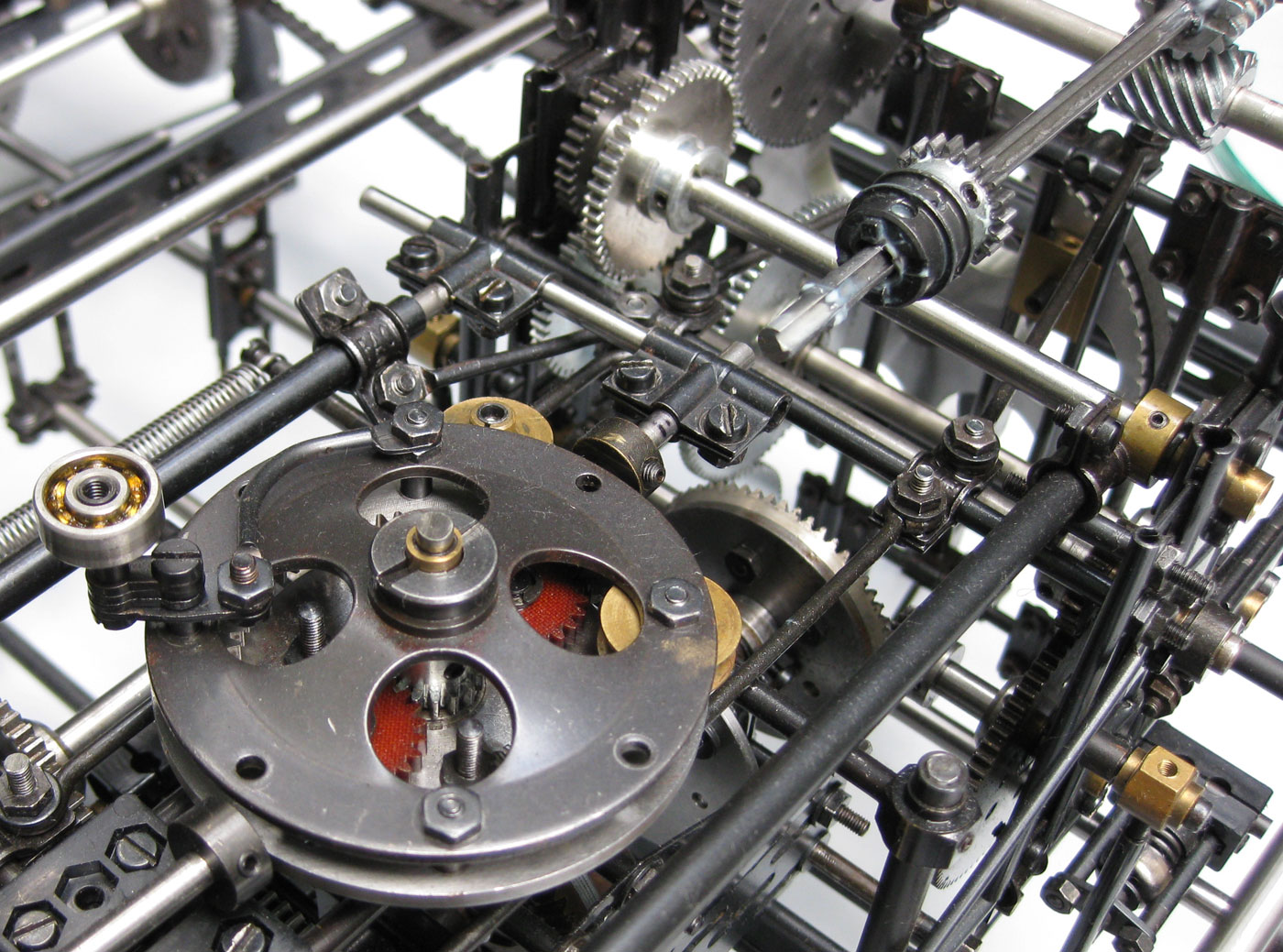
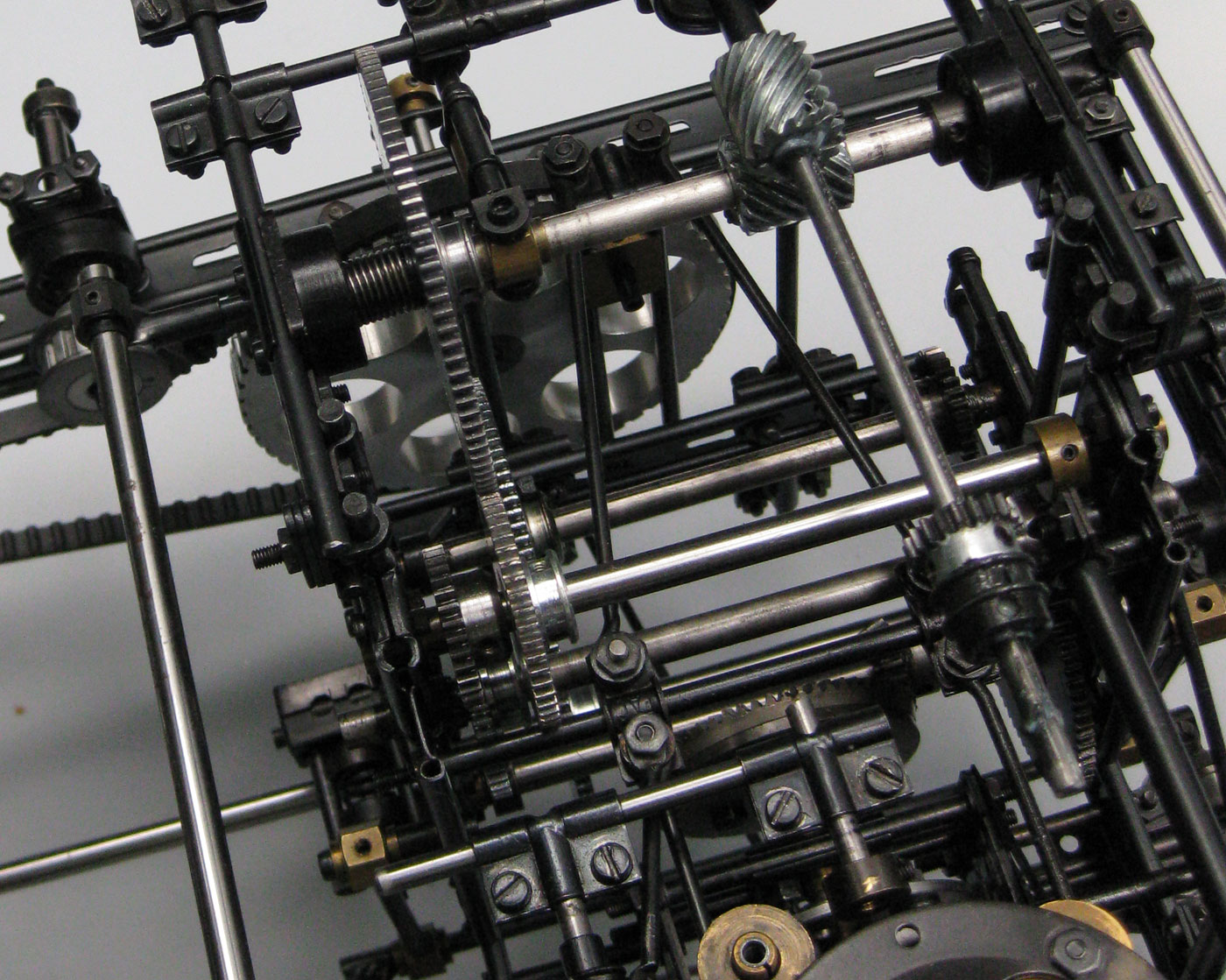
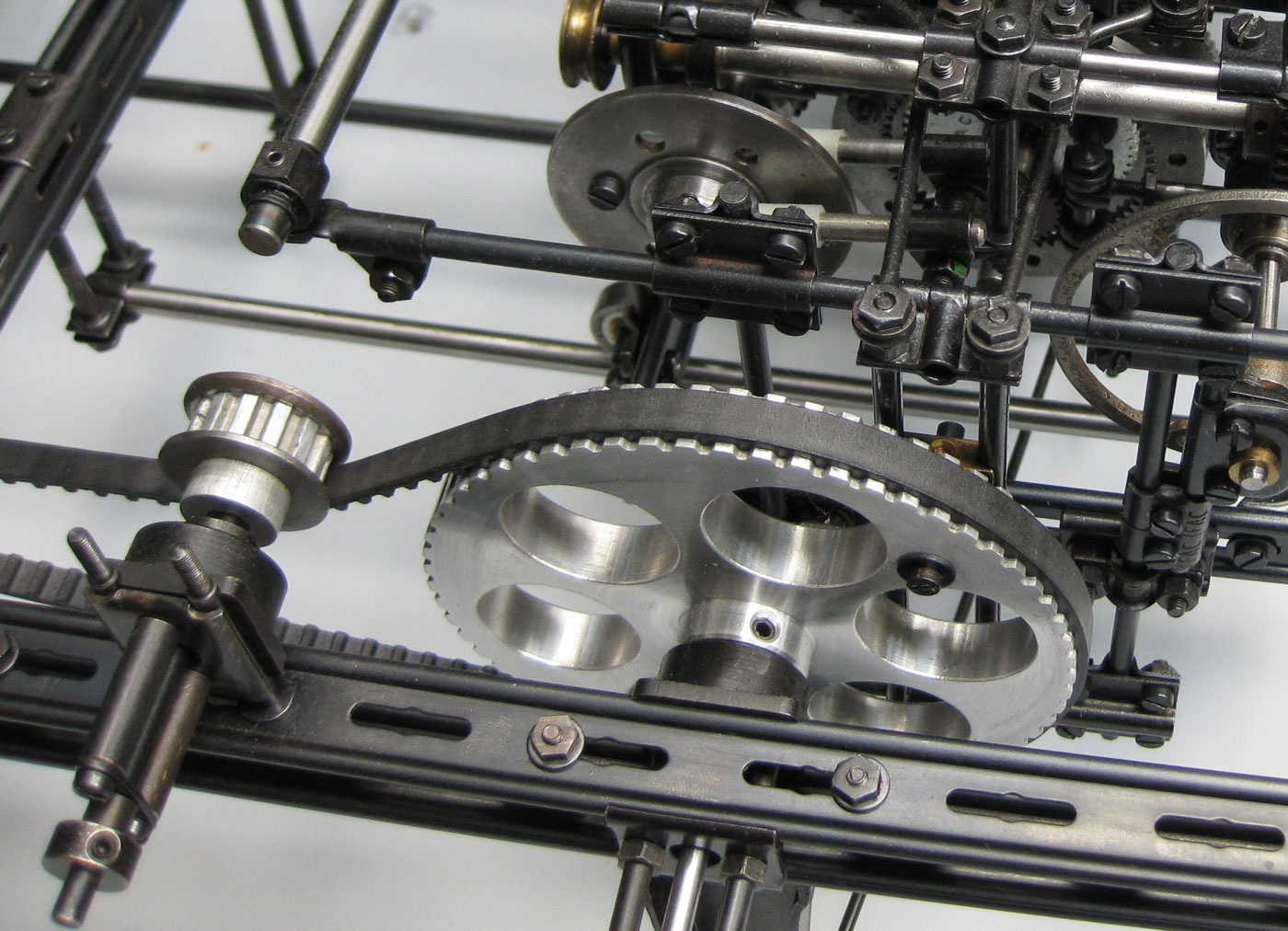
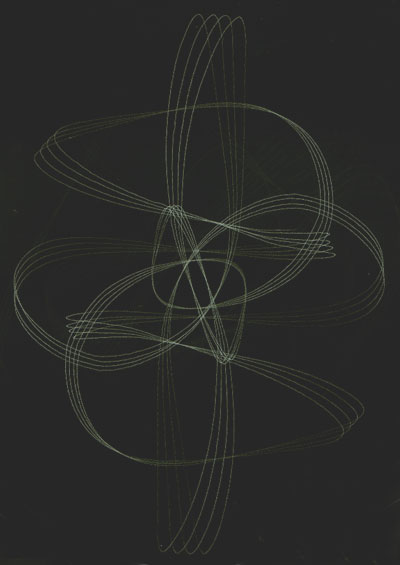
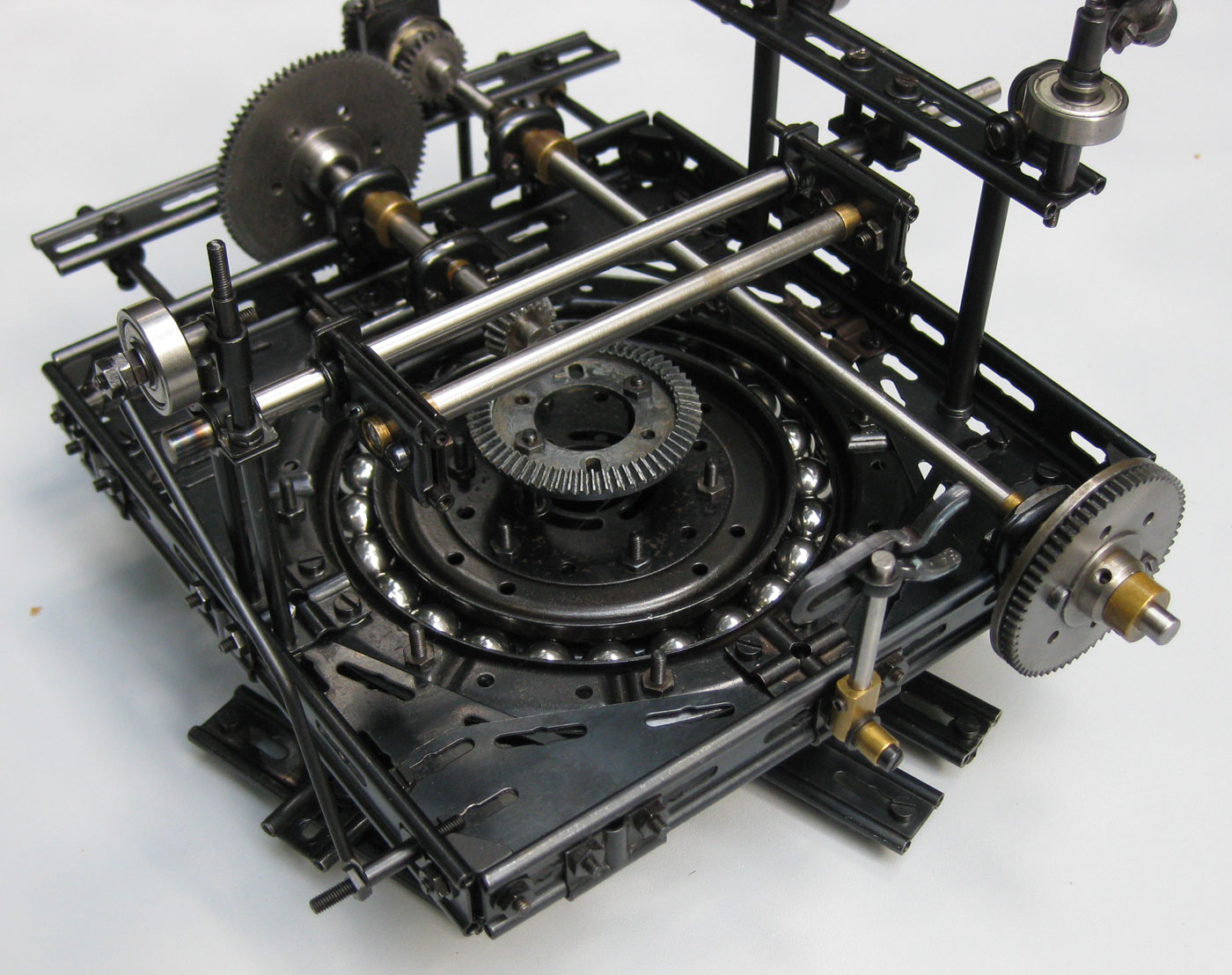
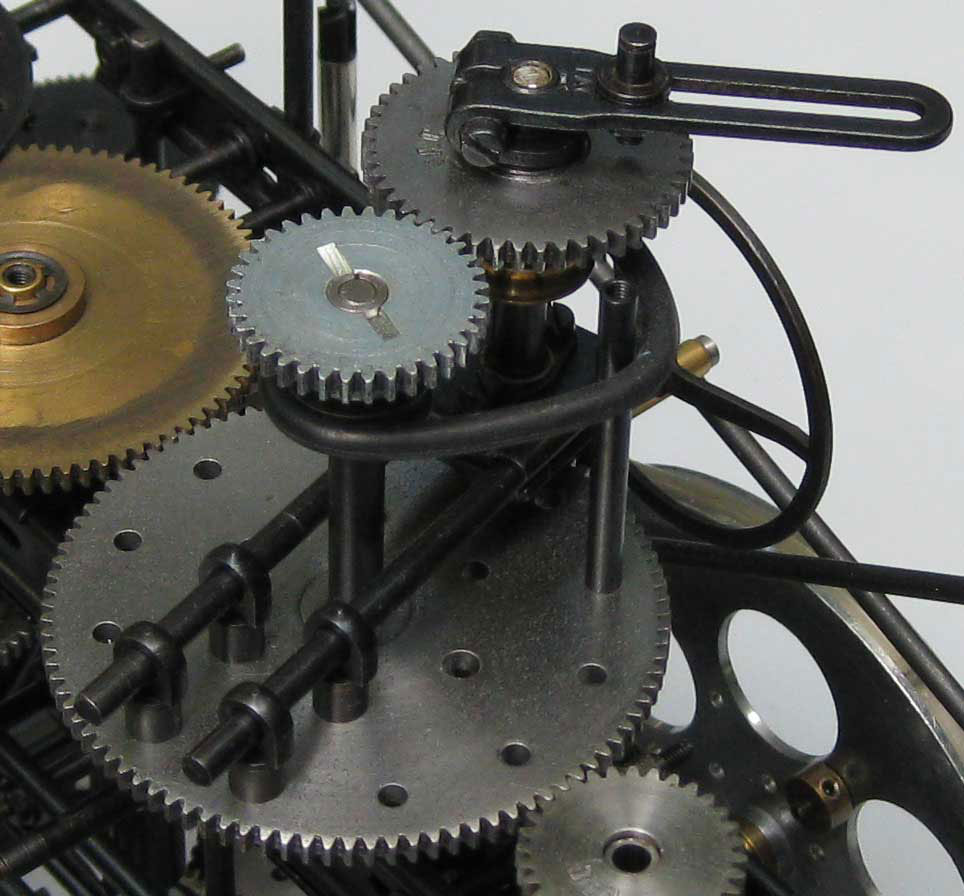
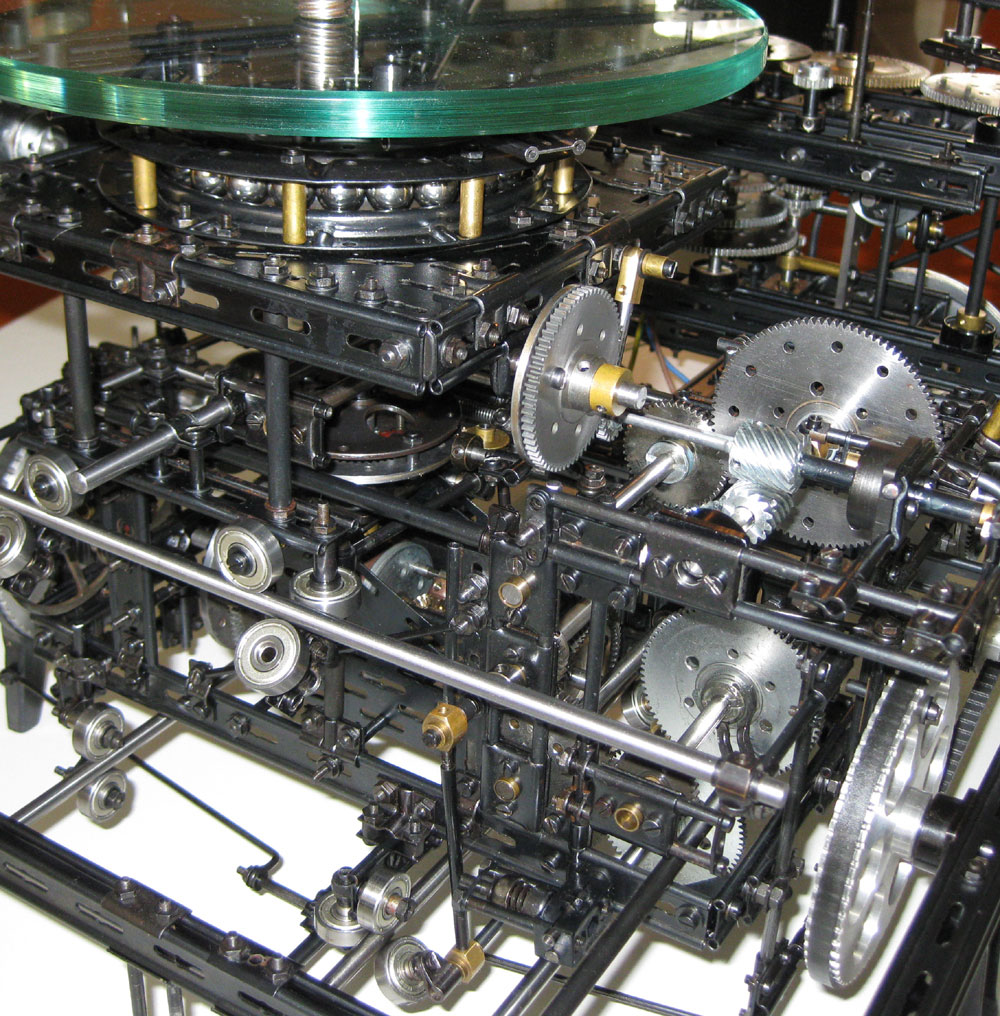
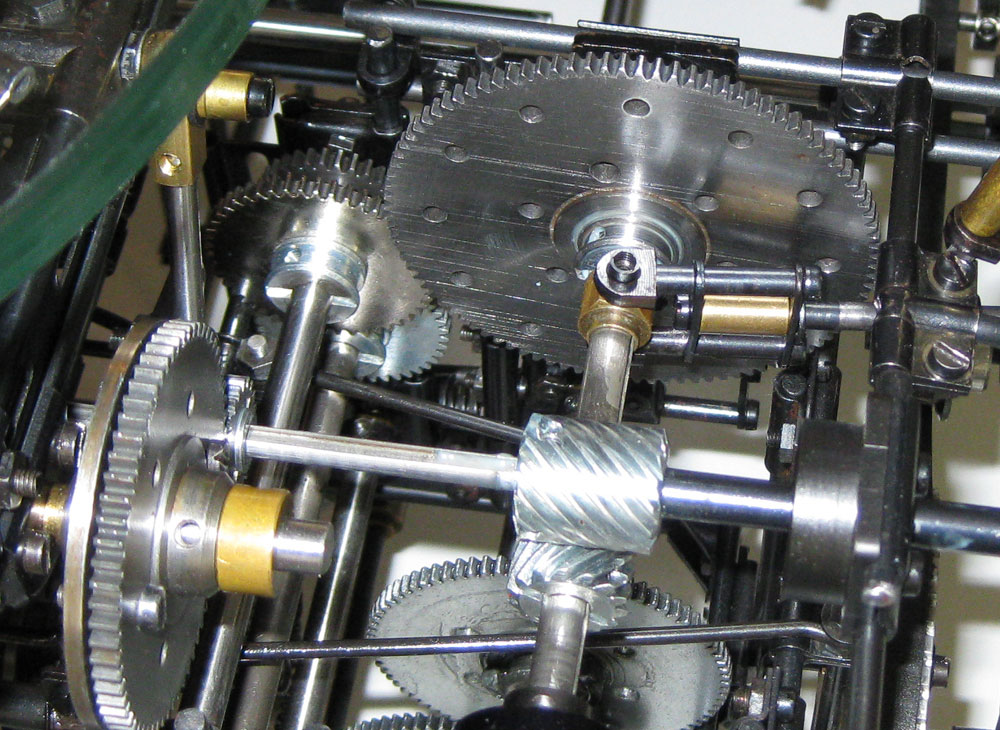
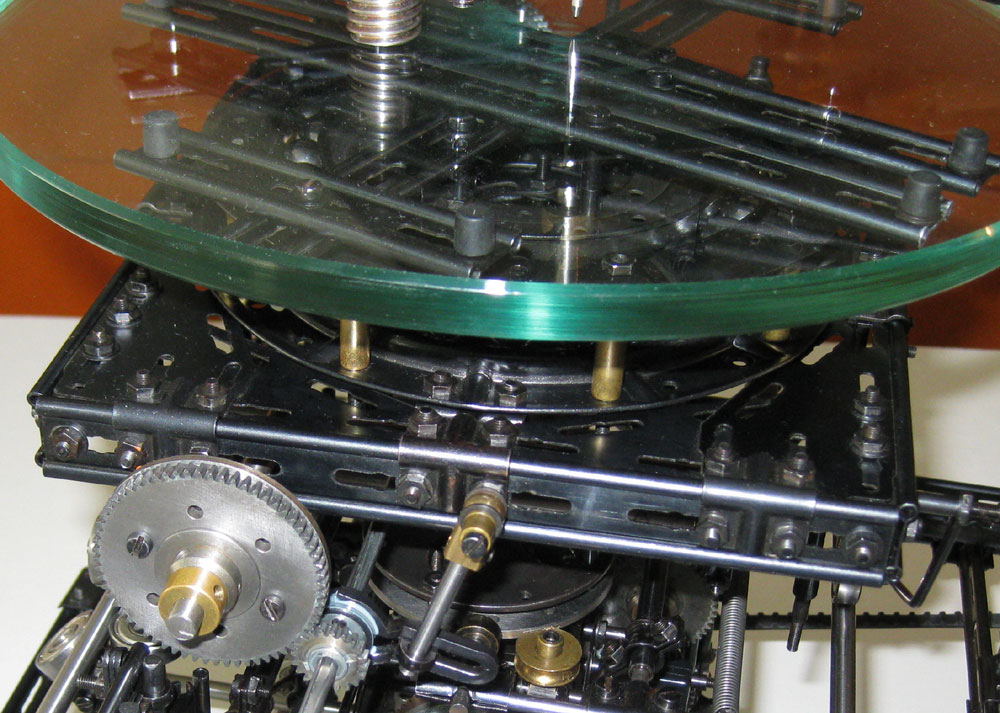

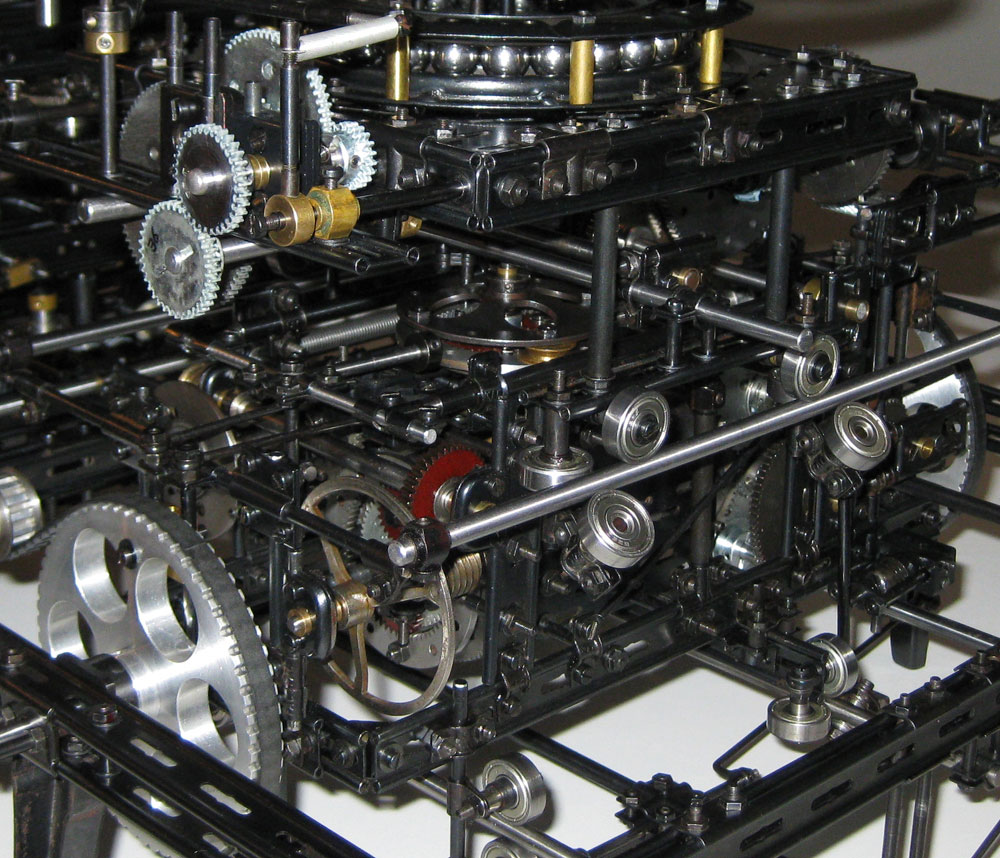
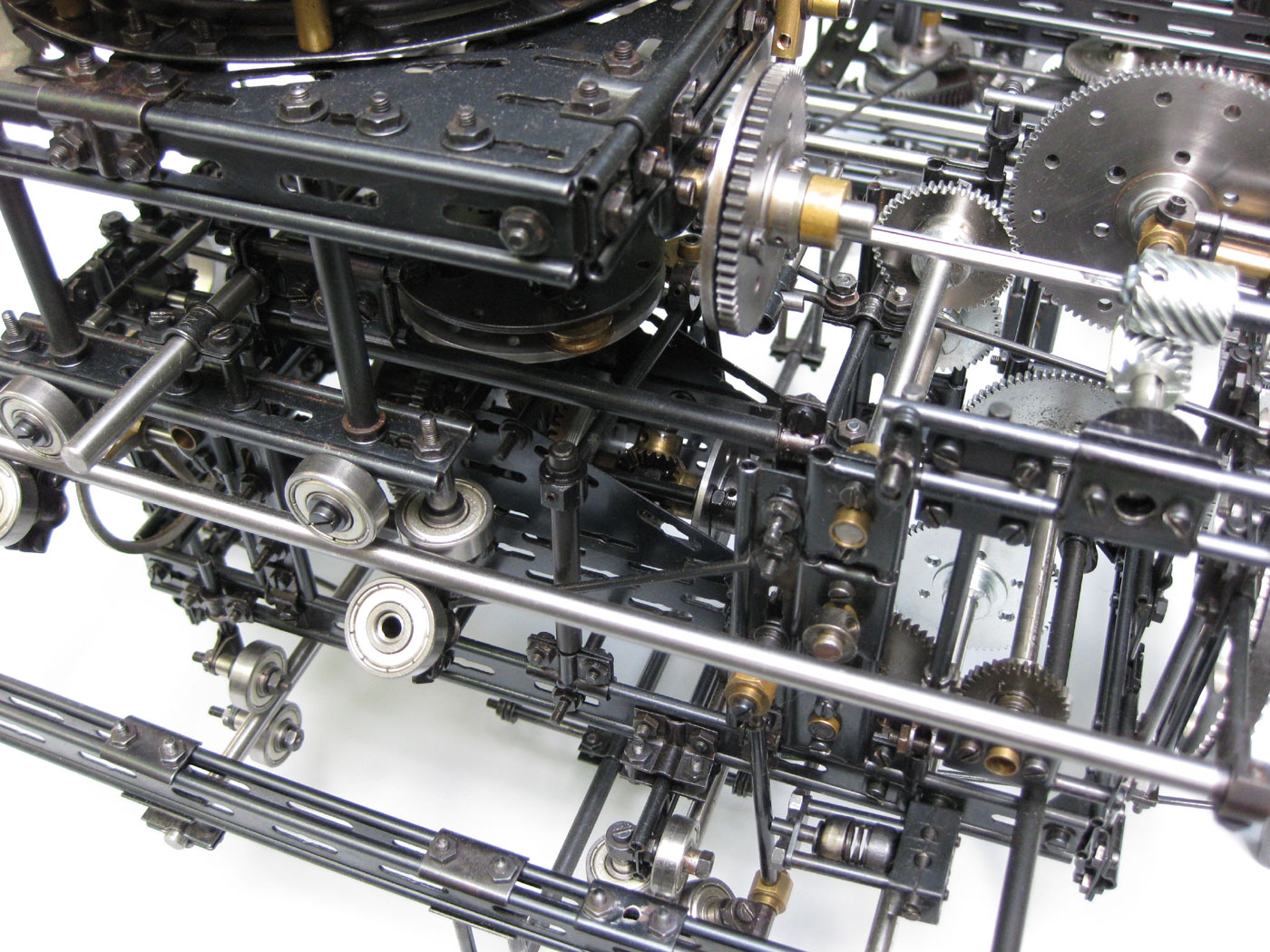
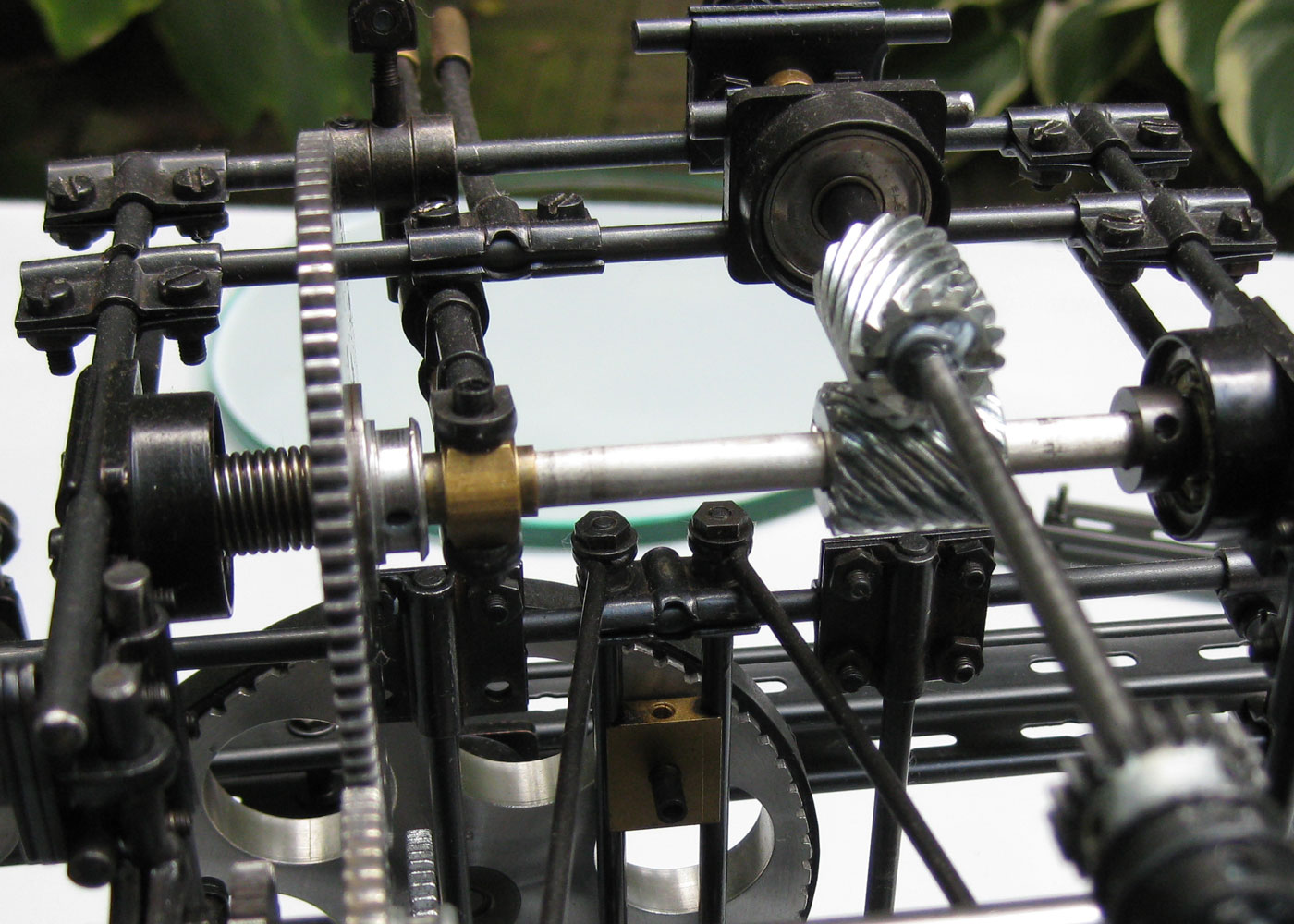
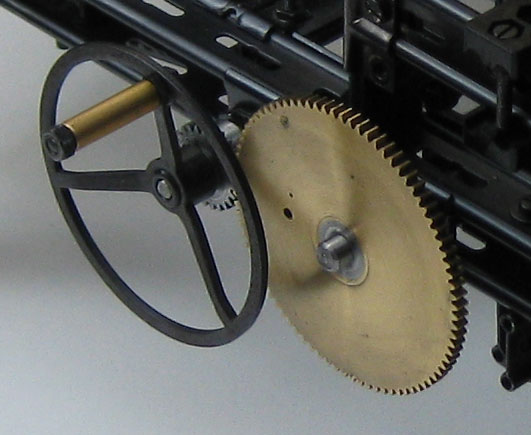

Detail of the X and Y table. Note that the aluminium pulleys and driving belts are no FAC parts. The large roller bearing consists of 2 outer rings nr. 2330, 2 inner rings 2320 and 1/2” balls

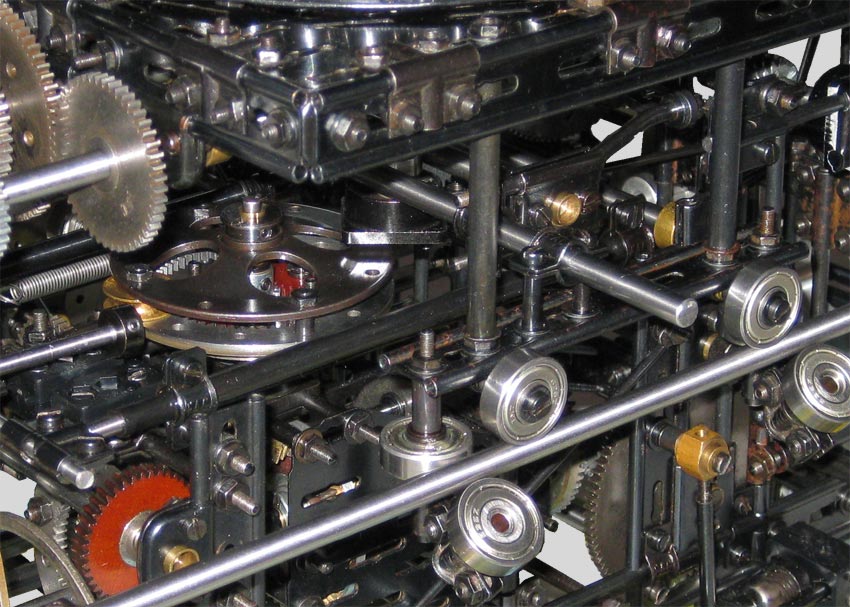
Detail of the x table and it’s guiding. The roller bearings have been placed in such a way that the 6mm axle is incapsulated by the bearings. This type of guiding provides a pure linear movement, also called a hysteresic movement, free from any clearance.
